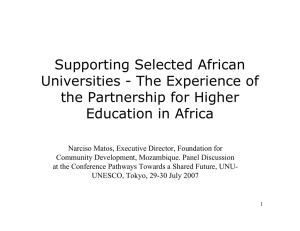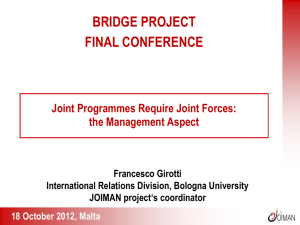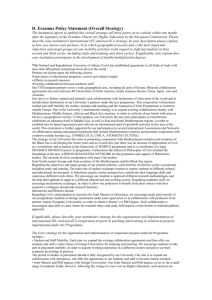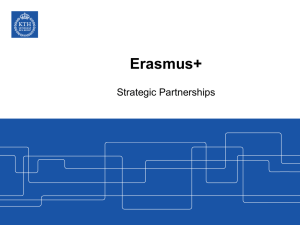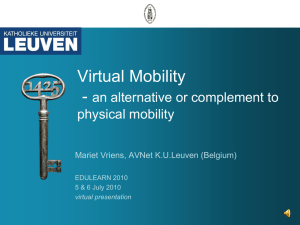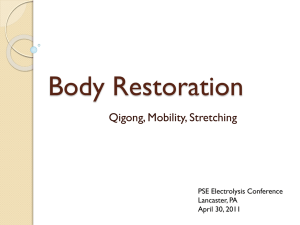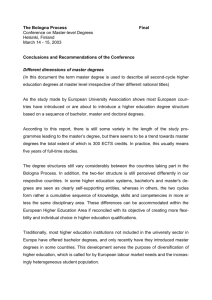Strategy for the Internationalisation of Higher Education
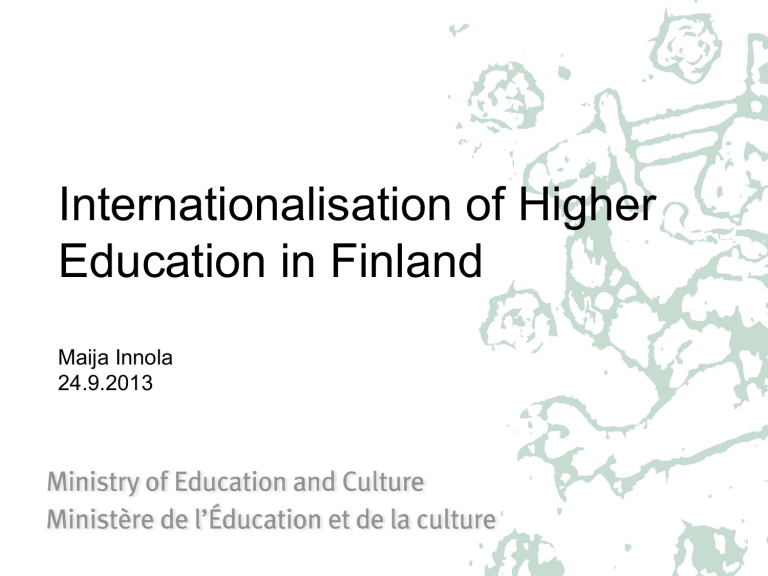
Internationalisation of Higher
Education in Finland
Maija Innola
24.9.2013
Social dimension: values, inclusiveness, public common good, access to information
Changing challenges
Joint campuses, programmes, courses, degrees
Knowledge, information sharing
Recryting of teachers, experts
Research infrastructures and programmes
Multidisciplinary, cross-disciplinary approach
Mobility of students, researchers, experts, administrators
TARGET : By 2015, the number of non-Finnish teachers, researchers and degree students has risen considerably and higher education institutions will have become genuinely international study and work communities.
2009 2010 2011
Amount of degree students:
Universities:
6 984
Polytechnics:
6 962
Student mobility/ over 3 months
U: 10 327
P: 7 556
Mobility of staff/ mean, average
U: 0,18
P: 0,88
Universities:
7 809
Polytechnics:
7 724
U: 10 444
P: 8 390
U: 0,36
P: 0,94
Universities:
8 752
Polytechnics:
8 701
U: 10 257
P: 8 539
U: 0,36
P: 0,98
TARGET 2013-
16
Universities:
8 950
Polytechnics:
7 475
U: 11 950
P: 8 830
U: 0,42
P: 1,09
Future potential of student mobility?
15
10
5
0
30
25
20
50
45
40
35
31
14
19
14
15
13
18
11
21
9
Finland Norway Denmark Sweden Estonia
Conference on mobility, Helsinki
Lähde: Student Mobility in Higher Education: a Nordic Comparison using Eurostudent Data plan to enroll have been enrolled
19
7
Latvia
15
5
Lithuania
25.05.2011
5
TARGET : Finnish higher education institutions are internationally renowned and attractive study and work environments
reforming the universities core funding from 2013
reforming the core funding and act of the polytechnics 2014-15
strategies, priorities, structural changes, mergers of the HEIs
strong regional innovation centres
national research infrastructures policy and funding
student and research welcome services
International Degree programmes, evaluated in 2013
http://www.kka.fi/files/1822/KKA_0213.pdf
Degree programmes in English (2012)
Polytecnics
Universities
Bachelor’s degrees
103
3
Master’s degrees
31
220
Doctoral degrees
134
255 32
106 251 32 389
International or programmes in English?
Source: Study in Finland database, www.studyinfinland.fi
Universities core funding from 2013
Steering of HEI’s
• Internationalisation is part of the agreements between the Ministry and HEI’s
- Quantitative targets (student mobility, number of international students)
- Performance indicatiors (Staff international mobility / teaching and research personnel, international research funding)
• How could we better cover all aspects of internatiolisation of higher education?
Education and expertise export
• Finnish higher education institutions are attractive and reliable cooperation partners –international networking
• Potential of the export of competence and education to become a significant exports?
• Ongoing trial of tution fees /students outside EU (2010-2014) – political decissions about the future
• Increase of the cross-border education also in Finland?
Thank you! Kiitos!
11
